Medical ignorance claims athletes' lives
by Kurulu Koojana Kariyakarawana
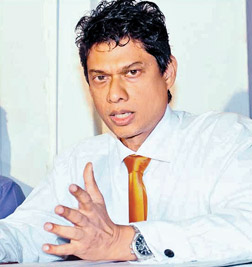 |
|
Prof. Arjuna de Silva |
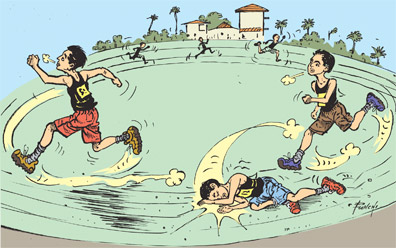 A crippling injury or an inevitable death due to an accident is not
uncommon in the history of sports. A number of incidents have been
reported where athletes or players not only lost their limbs, but also
their lives due to various accidents, preventable or non-preventable
ailments while engaged in sports both in the local and the international
arena. But four consecutive deaths of teenagers in the field of marathon
in the recent past is an alarming issue for the authorities and the
society. A crippling injury or an inevitable death due to an accident is not
uncommon in the history of sports. A number of incidents have been
reported where athletes or players not only lost their limbs, but also
their lives due to various accidents, preventable or non-preventable
ailments while engaged in sports both in the local and the international
arena. But four consecutive deaths of teenagers in the field of marathon
in the recent past is an alarming issue for the authorities and the
society.
The gravity of the seemingly coincidental deaths, now believed to
have occurred allegedly due to medical negligence has taken a serious
twist after ascertaining that all four incidents would have been
preventable if a proper method of health test was practised by the
authorities prior to the events.
Three schoolgirls and a school leaver, a teenage boy were the four
unfortunate victims who died in these isolated marathon races that took
place in Chilaw, Moratuwa, Aranayake and Kuliyapitiya in the last two
months. They are all believed to have died of sudden cardiac arrests.
The authorities were alarmed when President Mahinda Rajapaksa ordered
an immediate inquiry into the matter and to work out a system to subject
students selected for sports activities to medical fitness tests prior
to the events. The President made the directive in the wake of the third
death reported from Aranayake on February 26. Yet, the fourth death was
reported a few days ago while the competent authorities were busy
formulating a methodology to check the physical fitness levels of the
participants.
However, weeks after the first death the authorities have been able
to develop a formula to counter the crisis which might eventually put a
full stop to similar sports related tragedies in the future.
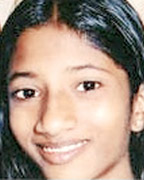 |
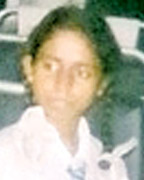 |
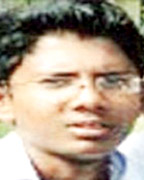 |
| Kaushalya
Pavithrani |
Hashini Anusha |
Lakshitha Madushan |
When contacted by the Sunday Observer, the Director General of the
Institute of Sports Medicine Prof. Arjuna de Silva said the Sports
Ministry with the Ministry of Health had created a set of guidelines
which was sent to all the schools countrywide on Thursday in the form of
a circular.
The circular has made it compulsory to conduct a medical test
followed by an Electrocardiography (ECG) test on anybody who is about to
participate or practise in races above 3,000 metres, including marathon
and half marathon.
Referring to the expenses which the athletes have to bear for medical
tests Prof. De Silva said the tests and ECG can be carried out free of
charge at any government hospital and the parents are strongly advised
not to admit their children for races especially if they suffer from any
type of ailment or disease. He said many parents and the trainers are
satisfied with a simple medical check up prior to the event, but an ECG
is a must to ascertain the actual health condition of an athlete.
Another key feature of the circular is to impose an age restriction
on the athletes who are to take part in the events.
They have to be 15 years or more to be able to participate in lengthy
races.
Expressing his deep concern over the tragedy the professor said that
all four deaths were preventable if a simple ECG test had been carried
out on each athlete which could help identify their heart conditions and
other ailments.
| The series of incidents started in Chilaw on January 30 where an
Advanced Level student age 19 from Ananda National College collapsed on
the roadside while participating in a marathon race organised by her
school. The victim, Kaushalya Pavithrani, an arts stream student was
found lying on Sedawatta Road while the race was still in progress. She
was rushed to the Chilaw Hospital, but was pronounced dead on admission.
Anjali Isurika aged 13 was the second victim who died while
practising for the Zonal Sports Meet on February 18. She was a student
of Gnaneswara Maha Vidyalaya in Villorawatte, Moratuwa. Anjali who
complained of a severe pain in her abdomen collapsed to her death.
The third victim, an Advanced Level student of Rivisanda Central
College in Aranayake was taking part in a 5,000 metre marathon race for
her school’s sports meet on February 26. Hashini Anusha who could
complete only several hundred metres in the marathon collapsed. She was
admitted to the Mawanella Hospital but succumbed to her ailments prior
to the admission. Her death was due to a rare cardiac ailment.
In the fourth incident, the victim named Lakshitha Madushan (16) a
student of Kandanegedara Viduhala in Pannala had taken part in a 5000
metre marathon organised by the Youth Brigade Kuliyapitiya on March 19.
Lakshitha could complete about 800 metres before he collapsed on the
road. He was rushed to the Kuliyapitiya Hospital but was pronounced dead
upon admission. It was reported that the victim was suffering from fever
for about a week prior to the race. His funeral was conducted in Pannala
on Thursday. The result of the Post-Mortem is yet to be announced.
|
Athlete’s Heart
‘Sudden cardiac death’:
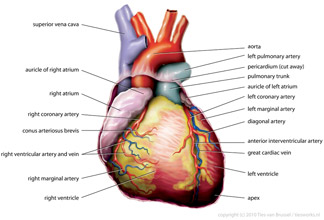 Physicians
define “sudden death” in young athletes (women as well as men, ages 35
and younger) as a non-traumatic, non-violent, unexpected death due to
cardiac causes within one hour of the onset of symptoms. One study
estimated that the incidence of sudden cardiac death in unscreened men
during exercise is 1 in 280, 000 per year. In studies of the risk of
death in marathons, it’s been estimated that one death would occur in
50,000 - 88,000 marathon finishers. In a study published by Dr. Lewis G.
Maharam with Dr. Steve Van Camp in 2004 revealed that the risk in
distances between 10 kilometres and half-marathon was significantly
lower; 3.1 deaths per million finishers. Physicians
define “sudden death” in young athletes (women as well as men, ages 35
and younger) as a non-traumatic, non-violent, unexpected death due to
cardiac causes within one hour of the onset of symptoms. One study
estimated that the incidence of sudden cardiac death in unscreened men
during exercise is 1 in 280, 000 per year. In studies of the risk of
death in marathons, it’s been estimated that one death would occur in
50,000 - 88,000 marathon finishers. In a study published by Dr. Lewis G.
Maharam with Dr. Steve Van Camp in 2004 revealed that the risk in
distances between 10 kilometres and half-marathon was significantly
lower; 3.1 deaths per million finishers.
Causes
Exercise causes normal blood flow and electrical changes
seen on ECG. During intense aerobic exercise, the oxygen consumption of
muscle tissue increases and cardiac output must rise to meet the
demands. Over time, aerobic training results in increased left
ventricular mass, decreased resting heart rate, increased ventricular
stroke volume, and increased cardiac output, among other effects. This
is called an “Athlete’s Heart” - it is normal and nothing to worry
about.
There are enlarged heart conditions that can lead to
“sudden death.” Although more than 20 pathologic entities have been
identified as causes of sudden death in young athletes, a few lesions
are responsible for most of these deaths that are reported.
Some of the common ailments found in the victims are
Hyperpertrophic Cardiomyopathy, Coronary Artery Abnormalities,
Myocarditis, Marfan Syndrome and Electrophysiologic Abnormalities.
|



